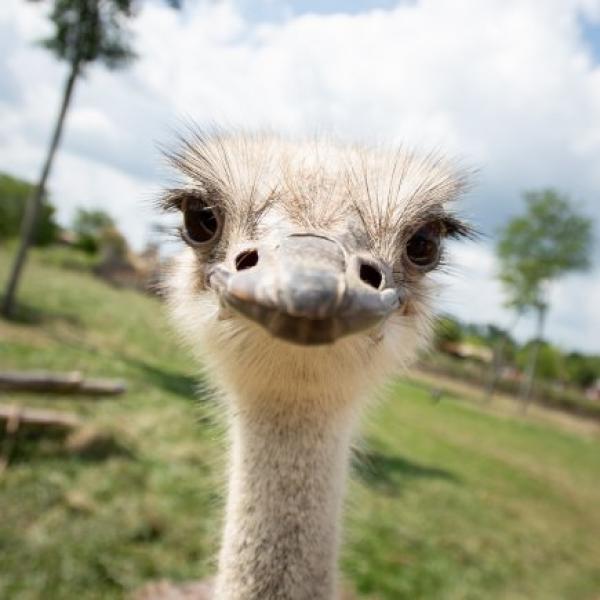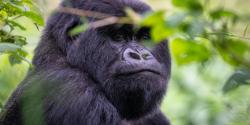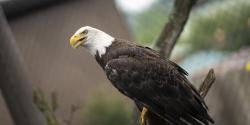The ostrich is the biggest and heaviest bird in the world. Even though they may look light and fluffy, ostriches can weigh as much as 350 pounds.
Their scientific name, camelus, means "camel bird," which is a name that reflects their similarities to camels. Ostriches have long necks, big eyes, noticeable eyelashes, and a unique way of walking that reminds people of camels. Just like camels, ostriches can handle hot temperatures and can survive without water for a long time.
Scientific Name: Struthio camelus
Conservation Status: Least Concern
Size: 5 ½ to 9 ft. tall, with females generally being shorter than males
Weight: Females range from 198 to 242 lbs.; males range from 220 to 287 lbs.
Median Life Expectancy: 10.6 years













